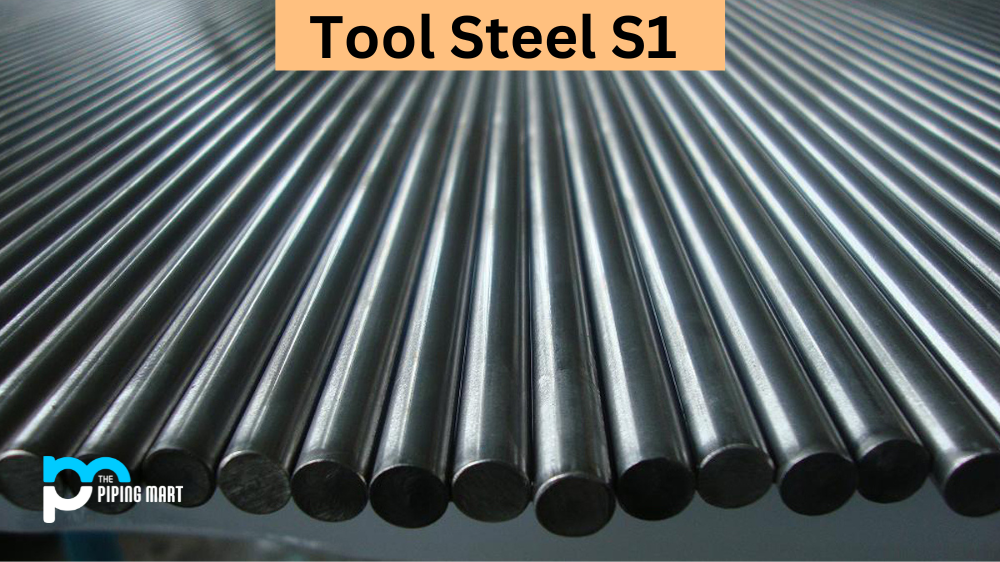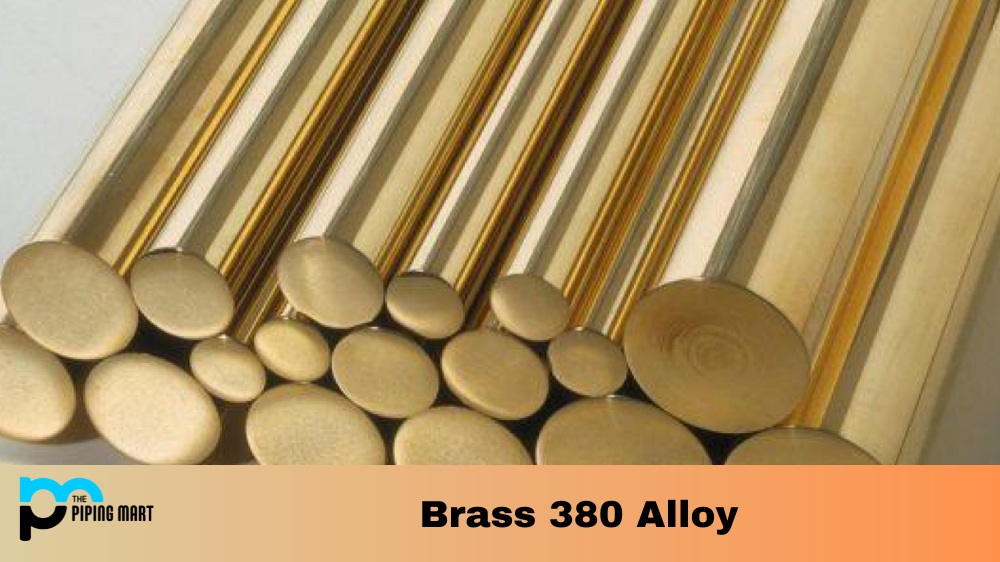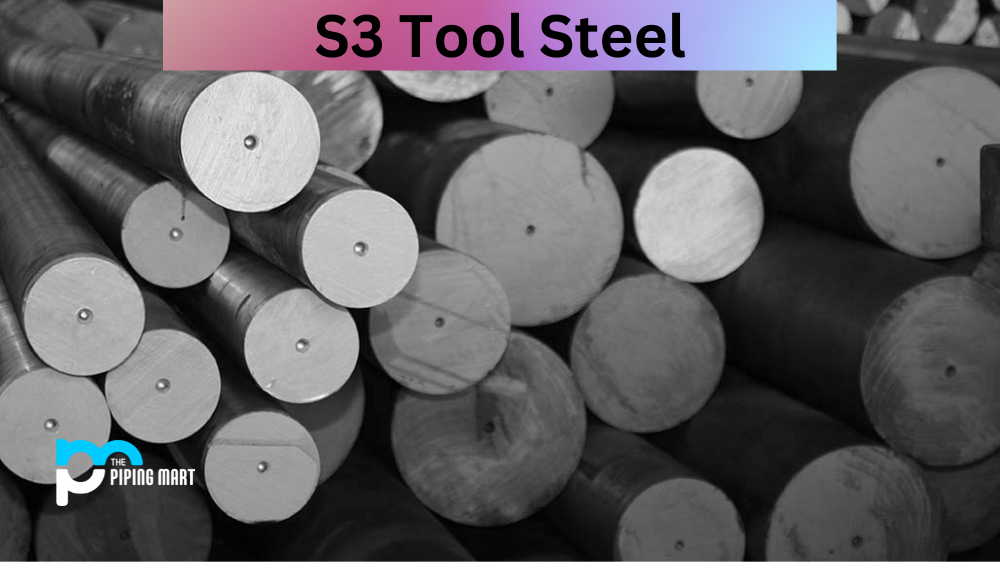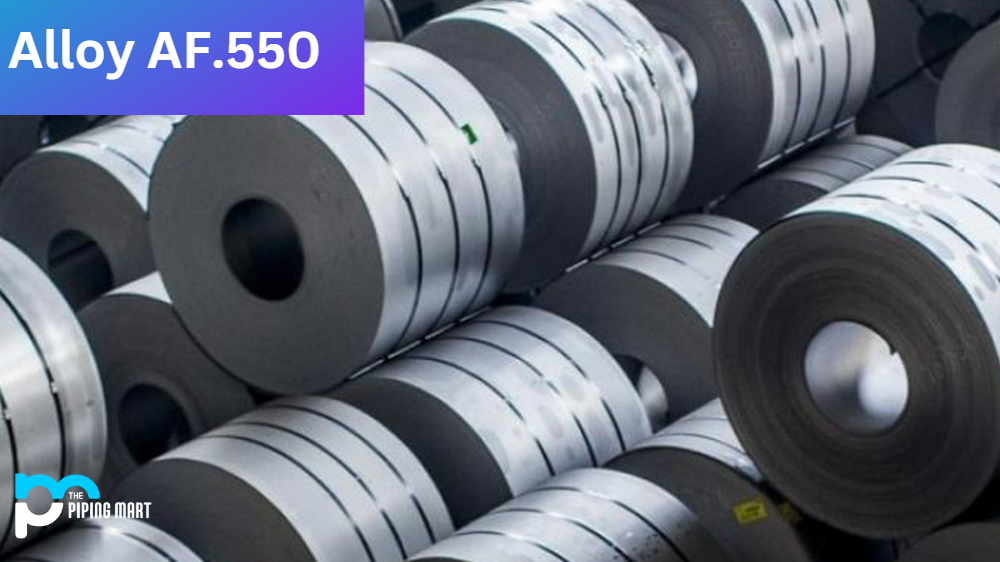Tool steel is an important alloy used in a wide variety of industrial applications, mainly bars and pipes . One of the most popular types of tool steel is UNS T41901, or Shock Resisting Steel, which combines good toughness and strength with excellent wear resistance. This makes it ideal for use in many tools that require these qualities. This blog post will explore what S1 Tool Steel is and how it can be used in various industries.
What is Tool Steel S1?
Tool Steel S1 is an alloy composed primarily of carbon, chromium, manganese, and tungsten with small amounts of silicon and molybdenum. It has a high shock-resistance property, allowing it to hold its shape under extreme pressure or impact. It also has excellent wear resistance due to its high hardness after heat treatment. This makes it ideal for use in various tools where these qualities are required.
S1 Tool Steel Composition
| Element | Content (%) |
|---|---|
| C | 0.40-0.55 |
| Mn | 0.10-0.40 |
| Si | 0.15-1.20 |
| Cr | 1.00-1.80 |
| Ni | 0.3 |
| Mo | 0.5 |
| V | 0.15-0.30 |
| Cu | 0.25 |
| P | 0.03 |
| S | 0.03 |
| W | 1.50-3.00 |
S1 Tool Steel Physical Properties
| Properties | Metric | Imperial |
|---|---|---|
| Density (@20°C/68°F) | 7.89 g/cc | 0.285 lb/in3 |
S1 Tool Steel Mechanical Properties
| Properties | Metric | Imperial |
|---|---|---|
| Hardness, Rockwell C (air cooled from 899°C, 30 mins) | 54.5 | 54.5 |
| Hardness, Rockwell C (air cooled from 927°C, 30 mins) | 56 | 56 |
| Hardness, Rockwell C (air cooled from 982°C, 30 mins) | 56.5 | 56.5 |
| Modulus of elasticity | 207 GPa | 30000 ksi |
| Charpy impact (V-notch; oil quenched from 954°C; 149°C temper temperature) | 10.8 J | 8.00 ft-lb |
| Charpy impact (V-notch; oil quenched from 954°C; 625°C temper temperature) | 29.8 J | 22.0 ft-lb |
| Machinability (1% carbon steel) | 70.0 – 75.0% | 70.0 – 75.0% |
| Poisson’s ratio | 0.27-0.30 | 0.27-0.30 |
S1 Tool Steel Thermal Properties
| Properties | Conditions | ||
|---|---|---|---|
| T (°C) | Treatment | ||
| Thermal expansion | 12.4 x 10-6/ºC | 20-100 | – |
S1 Tool Steel Equivalent
- AFNOR 55 WC 20
- DIN 1.2550
- UNI 58 WCr 9 KU
- ASTM A681
- FED QQ-T-570
- SAE J437
- SAE J438
- UNS T41901
- ASTM A681
- DIN 1.2542
S1 Tool Steel Uses
Tool Steel S1 can be used in many different industries for various applications. It is often used to create cutting tools such as drill bits, saw blades, chisels, and more. It can also be used to create punches and dies for stamping operations, and forging dies that require great wear resistance. It is also ideal for making knives due to its superior edge retention capacity compared to other steels. Finally, it can be used to make grinding wheels that need superior sharpness and longevity due to its high hardness level after heat treatment.
Corrosion Resistance & Heat Resistance
Tool Steel S1 has good corrosion resistance properties due to its high chromium content, which helps protect against rust and corrosion from moisture or other environmental elements. It also has great heat resistance thanks to its tungsten content which helps prevent warping or distortion when exposed to extreme temperatures during welding or other processes. Additionally, the molybdenum content gives it additional strength at higher temperatures, so tools made from this steel retain their structural integrity even under extreme conditions. Lastly, the silicon content helps improve machinability by reducing chip formation while maintaining superior wear-resistance properties compared with other steels.
Heat Treatment & Machining
Tool steel must undergo heat treatment before being used for various applications as this helps bring out the best properties of the material itself, such as hardness, strength, wear resistance, etc. Heat treating involves increasing the temperature of the steel up until just before melting point and then cooling it down rapidly, which strengthens the metal structure resulting in better performance characteristics like higher hardness levels with more resistance towards impacts and wear than untreated steel would have had. Regarding machining, tool steel s1 is relatively easy to machine with standard carbide cutters. Still, some tool marks may show on surfaces if not finished properly, so proper cooling techniques should be employed while cutting tools on tool steel s1.
Conclusion:
In conclusion, tool steel s1 offers many benefits over other types of tool steels thanks mainly to its high shock-resistance, wear-resistance, corrosion-resistance as well as heat-resistance properties all combined into one material, making it an ideal choice for many manufacturers looking for reliable, long-lasting tools in their workshops. To get the maximum potential out of tool steel s1, proper heat treatment must be done before putting them into use, along with careful finishing techniques during the machining process. With those two steps taken care of, there’s no reason why you shouldn’t expect top-notch performance from your tool steel s1 parts. Intended Audience: Industrial workers who want information about Tool Steels S1’s uses and features

Abhishek is a seasoned blogger and industry expert, sharing his insights and knowledge on various topics. With his research, Abhishek offers valuable insights and tips for professionals and enthusiasts. Follow him for expert advice on the latest trends and developments in the metal industry.




